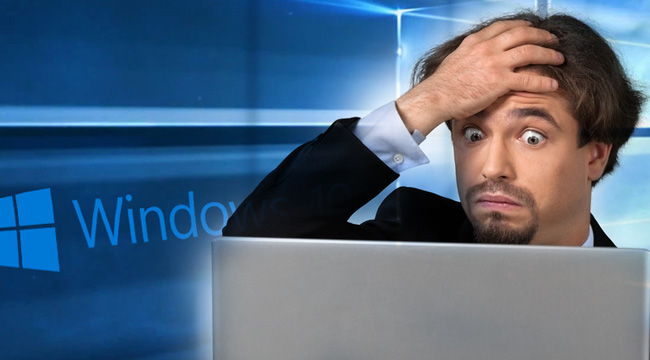
On July 29, Microsoft will stop offering free Windows 10 upgrades to current Windows users and the price will jump to $120. As a result, they’re stepping up their campaign to get you to upgrade and users are pushing back. Here’s what you need to know, whether you want to upgrade or not.
Why Does Microsoft Want Me To Upgrade?
There’s a two-fold answer. The first is that Windows 10 is more secure and stable than Windows 7 or Windows 8.1. This is the line Microsoft trumpets, and while it’s reasonable to consider their ulterior motive, it’s undeniably true. As for that ulterior motive, Windows 10 is designed to work across all your devices, including your phone and your game console, so Microsoft is hoping you’ll buy more Microsoft stuff to go with Windows 10. The fact that it’s tightly integrated with Bing, which also makes them money, doesn’t hurt, either. That said, Microsoft hasn’t earned any friends with its overly aggressive tactics.
How Pushy Has Microsoft Gotten On This?
Microsoft hasn’t been showered in accolades for its push to get users upgrade to Windows 10. Yes, offering it for free was nice, but it started as an optional upgrade. Then Microsoft made it a “recommended” upgrade, which on a Windows machine means it would be downloaded and installed unless a user specifically said not to. Then it changed the pop-up to make it seem like users had to upgrade, when they could still opt out by exiting the popup. And then the popup was revised so the only way to delay or opt-out of the upgrade was to click a tiny link.
Many people, reasonably, feel railroaded into an upgrade they don’t necessarily want. It’s gotten to the point where some users are deactivating Windows Update to avoid the upgrade. That’s bad news, as that also happens to be how Microsoft installs security updates and patches bugs. But there is, in fact, a way to “downgrade.”
How Do I Get Windows 10 Off My Computer?
First of all, do not disable Windows Update! That’s the online equivalent of putting on a coat made out of fireworks and walking into a fire-breathing convention. No matter how much people hate Windows 10, disabling the tool Microsoft uses to protect us from the rest of the internet is a terrible idea. Instead, look for a small link in the popup that says “Click here to reschedule or cancel.” It’ll be right below the scheduled installation time and date.
If you download the upgrade by accident or just spend a few days with it and don’t like it, your OS is fully recoverable for 31 days after you install. Just go to Settings, then Update and Security, and click Recovery and Uninstall Windows 10. After 31 days, well, you’re stuck unless you can find a copy of your preferred OS and overwrite it.
Should I Upgrade?
Whether or not you should upgrade to Windows 10 depends on a few factors. The first is your computer. If you can run Windows 7, you can generally run Windows 10, but you may not want to depending on what you have installed and what you use your computer for. If your computer is a work device, it’s worth checking to ensure it can do everything you need it to on Windows 10, for example.
Long term, however, remember that an upgrade is going to eventually be a good idea. No matter how popular a version of Windows is, Microsoft will stop offering security upgrades eventually. You’ll just be delaying the inevitable for a few years, in that particular case, so if there’s no reason beyond stubbornness or dislike of Microsoft, just take the free upgrade and save the $120.
Beyond that, it’s a good OS. It’s got its quirks and annoyances, but overall, if you’ve used Windows in the past, it’s pretty much the same thing with a few extra pieces bolted on that you’ll either use constantly or barely notice. Really, if Microsoft had gone with the soft sell, it probably would have seen more upgrades.
In most cases, Windows users should upgrade. It’s worth saving the $120. But those who don’t want to can take solace in the fact that they won’t have to worry about it after the end of July.
